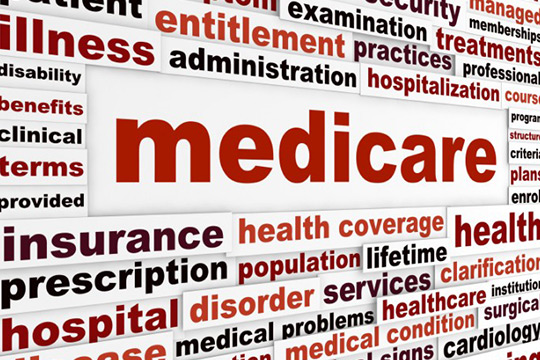
“IRMAA:” A Medicare Surprise!!
Have you ever been surprised by something that occurred more than a year ago, which you must now pay for? Such is the case for many Medicare beneficiaries who are affected by a Medicare provision known as “IRMAA” (Income-Related Monthly Adjustment Amount). IRMAA is a rule which stipulates that those with higher incomes must pay higher Medicare premiums – a Medicare “means test” of sorts.
The Standard Medicare Premiums[1]
Medicare Part B has a standard premium, paid by most enrollees, of $185 per month for 2025, forecasted to be $206.50 in 2026. But the “standard” Part B premium is only paid by single tax filers whose “provisional income”[2] is $109,000 or less, and married taxpayers who file jointly with a provisional income of $218,000 or less. For those with higher provisional income, they also pay an IRMAA surcharge on top of their Medicare premium. And the size of that surcharge can be quite substantial.
The IRMAA Surcharge, Defined
There are two Medicare premiums which are affected by IRMAA – Medicare Part B, which provides insurance coverage for outpatient medical services, and Medicare Part D, which provides insurance coverage for prescription drugs. The surcharges are added to the standard Medicare premiums based on a sliding scale of provisional income. For anyone whose income is higher than the above thresholds for their tax filing status, they will pay more for their Medicare Part B and/or Part D coverage. But here’s where the surprise comes in:
When determining your Medicare premiums for next year (which they do in the 4th quarter each year), Medicare uses your provisional income from last year to calculate your Medicare premiums for the forthcoming year. Thus, your provisional income from 2 years prior determines your new Medicare premiums. For example, if your 2024 provisional income as a single filer was $109,001, or as a married/jointly filer $218,001, your 2026 Medicare Part B premium would be $289.10 (instead of the projected 2026 “standard” $206.50). Plus, if you have Part D, you will also pay an additional $14.50 per month on top of your standard 2026 Part D premium. There are four additional IRMAA brackets which will dramatically affect your Medicare Premiums as well, and you’ll pay even more for your Medicare coverage if you reach any of those higher provisional income brackets. Single filers with provisional income of over $500,000 or married/jointly filers with income over $750,000 will pay $702.10 per month for their Medicare Part B coverage, and an additional surcharge of $91 per month on top of their regular Part D plan premium.
What Usually Causes IRMAA?
Many Medicare beneficiaries, not aware of IRMAA, may make a financial decision which will affect them later. For example, selling real estate with substantial taxable value, or converting a large standard IRA or 401(k) to a Roth IRA. In some cases, mandatory Required Minimum Distributions (RMDs) may also increase provisional income over the IRMAA thresholds, causing an increase in the Medicare beneficiary’s Part B and/or Part D premium in a subsequent year. Or simply continuing to work in a high paying career while enrolled in Medicare. Unfortunately, the event which caused the impact on one’s Medicare premium has already been done, and there are few ways to avoid it.
What To Do if IRMAA Surprises You
There are very few ways to avoid IRMAA because the provisional income which causes it to apply has already been realized, resulting in higher Medicare premiums. However, if you have a qualifying “life changing event,” you may request IRMAA relief by submitting form SSA-44 to the Social Security Administration. A life changing event which resulted in, or will result in, significant income decreases from the normal year used to calculate your IRMAA surcharge, will be considered by Social Security to potentially reduce (or eliminate) the IRMAA surcharge. You will be required to submit proof of your life changing event, as explained on Form SSA-44. Form SSA-44 should be submitted to your local Social Security field office by following the instructions at this link: https://www.ssa.gov/medicare/lower-irmaa
You can also get information about IRMAA by contacting the AMAC Foundation’s Social Security Advisory service at 1.888.750.2622, or via email to SSAdvisor@AMACFoundation.org.
[1] The 2026 IRMAA brackets in this article are projected only. SSA will announce the final 2026 IRMAA brackets soon. The 2025 IRMAA brackets can be seen at https://www.cms.gov/newsroom/fact-sheets/2025-medicare-parts-b-premiums-and-deductibles
[2] “Provisional Income” is also known as “MAGI” – Modified Adjusted Gross Income. MAGI is defined by the IRS as your Adjusted Gross Income (AGI) on your income tax return, plus certain other non-taxable income you may have had.
Also, if you’re unsure about how these basics apply to you, or if you have any questions about your individual situation under Social Security or Medicare, note that the AMAC Foundation provides a free-to-the-public advisory service to help Americans navigate the complexities of these program. All questions are answered quickly, at no charge. Learn more about it here…
Subscribe
Sign Up for Our E-Newsletter!
Stay up-to-date on all of the topics you care about by subscribing to our quarterly newsletter emailed directly to your inbox!
SubscribeSubscribe
Sign Up for Our E-Newsletter!
Stay up-to-date on all of the topics you care about by subscribing to our quarterly newsletter emailed directly to your inbox!
Subscribe